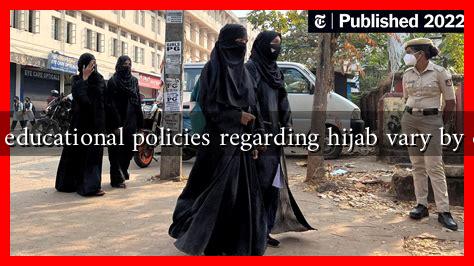-
Table of Contents
How Do Educational Policies Regarding Hijab Vary by Country?
The hijab, a traditional headscarf worn by many Muslim women, has become a focal point of debate in various countries, particularly in the context of educational policies. The regulations surrounding the hijab in educational institutions differ significantly across the globe, influenced by cultural, religious, and political factors. This article explores how these policies vary by country, providing insights into the implications for students and society at large.
Understanding the Hijab in Context
The hijab is not merely a piece of clothing; it symbolizes modesty and religious identity for many Muslim women. However, its acceptance and the policies governing its use in educational settings can differ widely. Here are some key factors that influence these policies:
- Cultural Attitudes: Societal norms and values play a significant role in shaping educational policies regarding the hijab.
- Legal Framework: The constitution and laws of a country can either protect or restrict religious expressions.
- Political Climate: The prevailing political ideology can influence how religious symbols are perceived in public spaces.
Case Studies of Educational Policies
France: A Secular Approach
France is known for its strict secularism, which is enshrined in the 1905 law separating church and state. In 2004, the French government enacted a law prohibiting the wearing of conspicuous religious symbols, including the hijab, in public schools. This policy aims to maintain a neutral educational environment but has faced criticism for marginalizing Muslim students.
- Impact on Students: Many Muslim girls have reported feeling alienated and pressured to choose between their faith and education.
- Legal Challenges: The law has sparked numerous legal battles, with advocates arguing that it infringes on individual rights.
Turkey: A Shift in Policy
Turkey’s approach to the hijab has evolved significantly over the years. Historically, the hijab was banned in public institutions, including universities, as part of the secular reforms initiated by Mustafa Kemal Atatürk. However, in recent years, the government has lifted these restrictions, allowing students to wear the hijab in educational settings.
- Current Status: The lifting of the ban has been seen as a victory for religious freedom, but it has also led to tensions between secular and religious factions.
- Social Implications: The change has encouraged more women to pursue higher education, reflecting a shift in societal attitudes towards the hijab.
Saudi Arabia: A Cultural Norm
In Saudi Arabia, the hijab is not just a personal choice but a legal requirement for women in public spaces, including educational institutions. The country’s educational policies reflect its conservative interpretation of Islam, where adherence to the hijab is strictly enforced.
- Enforcement: Schools have specific dress codes that mandate the wearing of the hijab, and violations can lead to disciplinary actions.
- Gender Segregation: Educational institutions are often segregated by gender, reinforcing traditional roles and expectations.
Global Perspectives and Trends
As globalization continues to influence cultural exchanges, the discourse surrounding the hijab in education is evolving. Countries like Canada and the United Kingdom have adopted more inclusive policies, allowing students to wear the hijab as a form of personal expression. These nations emphasize multiculturalism and the importance of accommodating diverse religious practices.
- Canada: Schools promote inclusivity, with many institutions actively supporting students’ rights to wear religious attire.
- United Kingdom: The UK has seen a rise in Muslim students wearing the hijab, with schools generally respecting their choices.
Conclusion
The policies regarding the hijab in educational settings vary widely across countries, reflecting a complex interplay of cultural, legal, and political factors. While some nations enforce strict bans, others embrace inclusivity and religious expression. As societies continue to evolve, the dialogue surrounding the hijab will likely remain a significant aspect of discussions on religious freedom and women’s rights. Understanding these diverse perspectives is crucial for fostering a more inclusive global community.
For further reading on this topic, you can explore resources from organizations like Human Rights Watch and Amnesty International.


